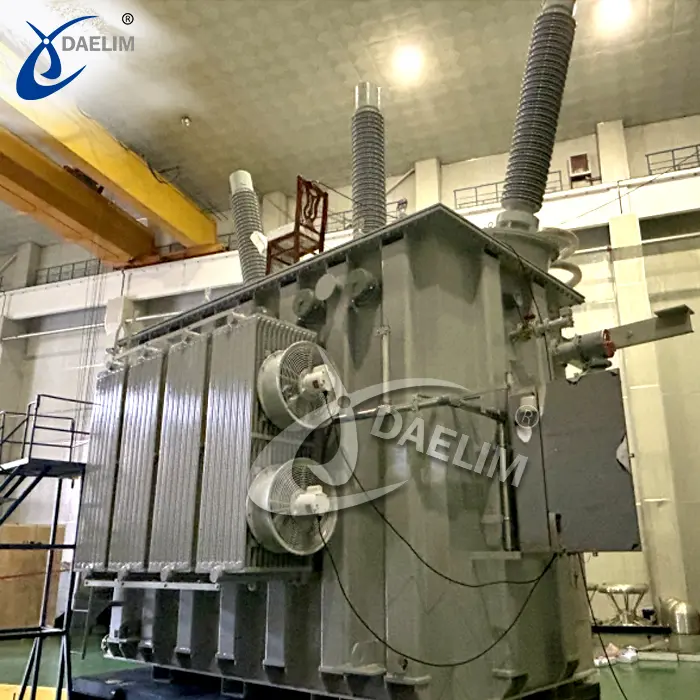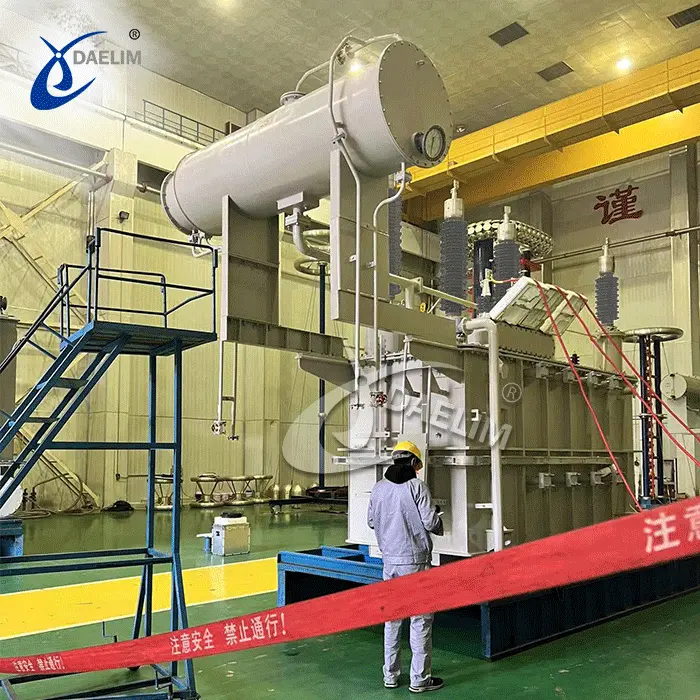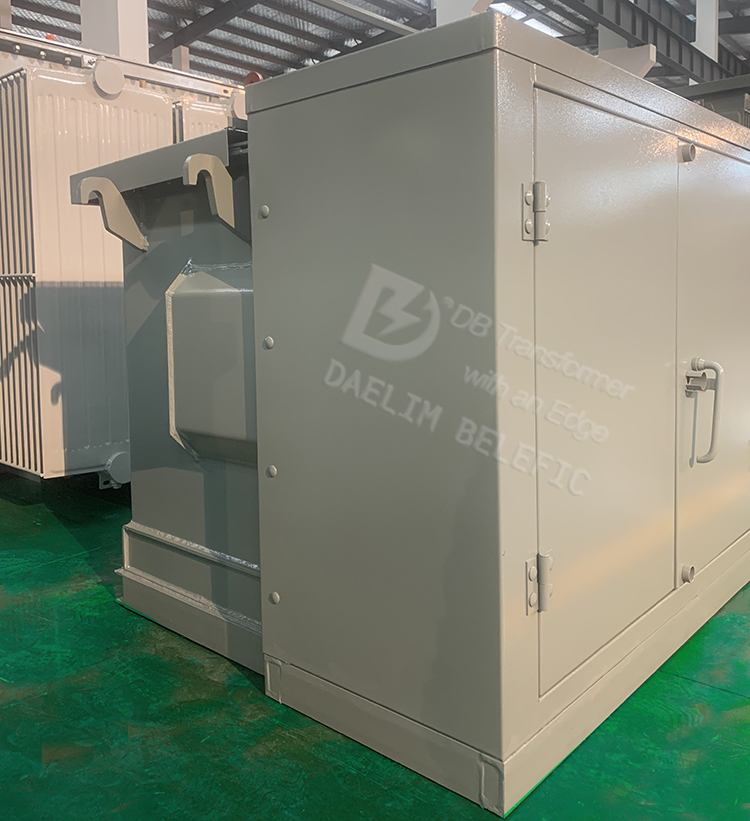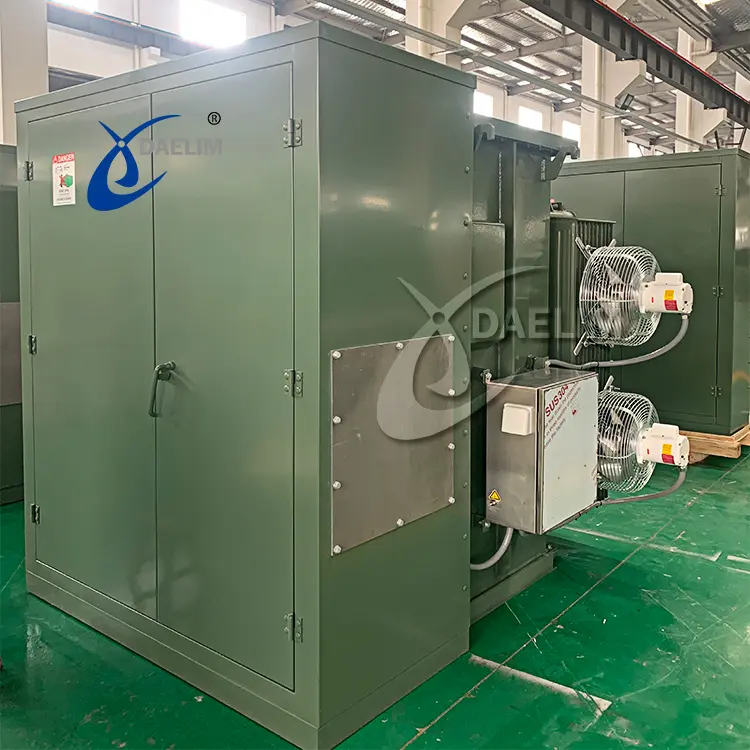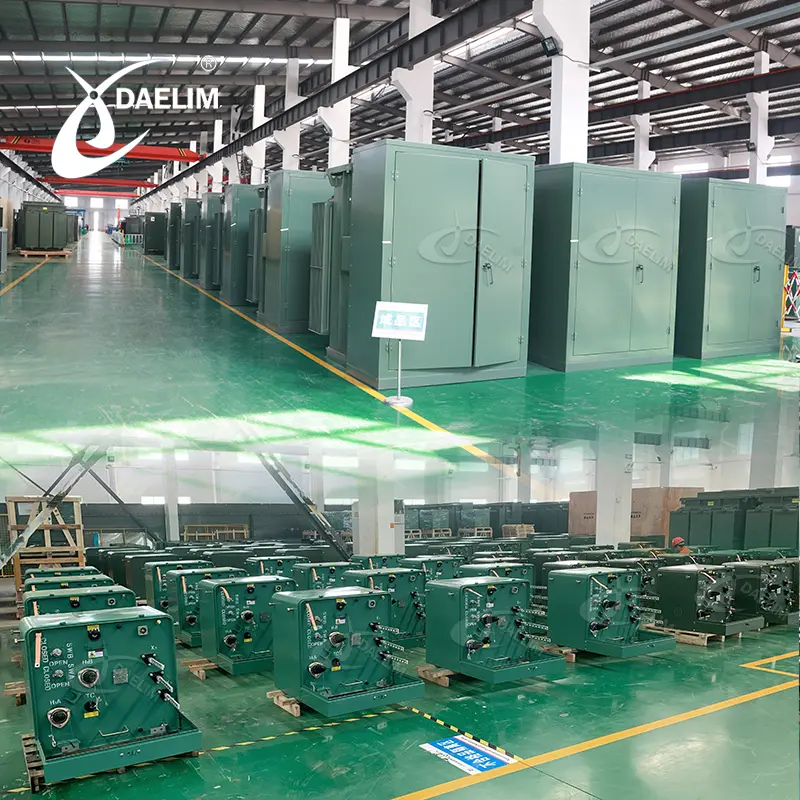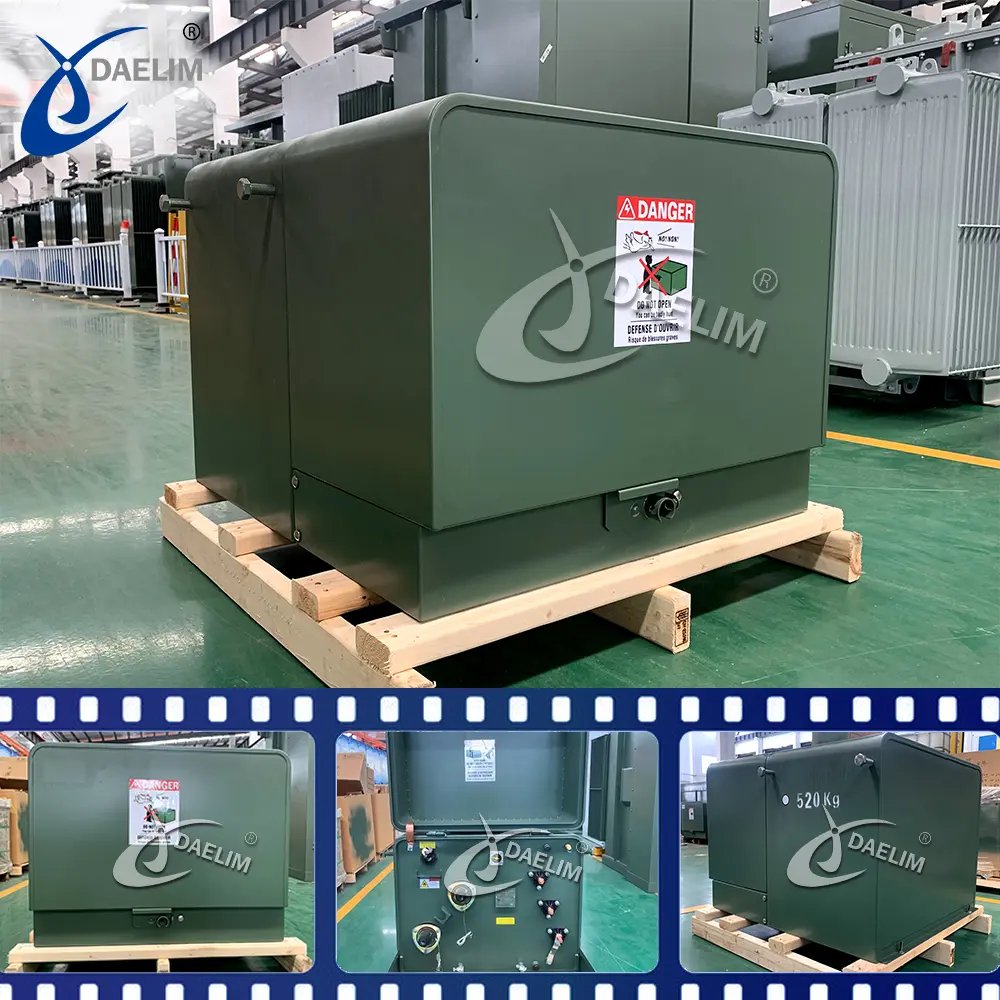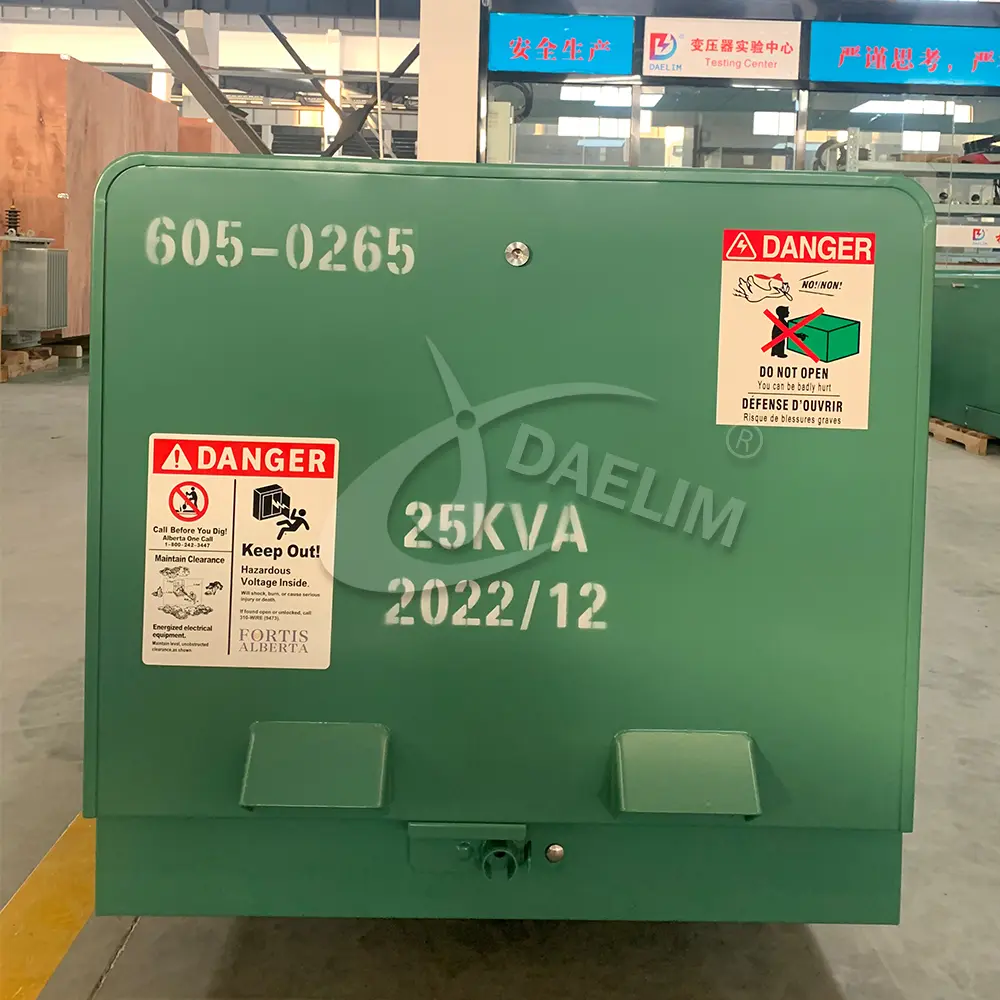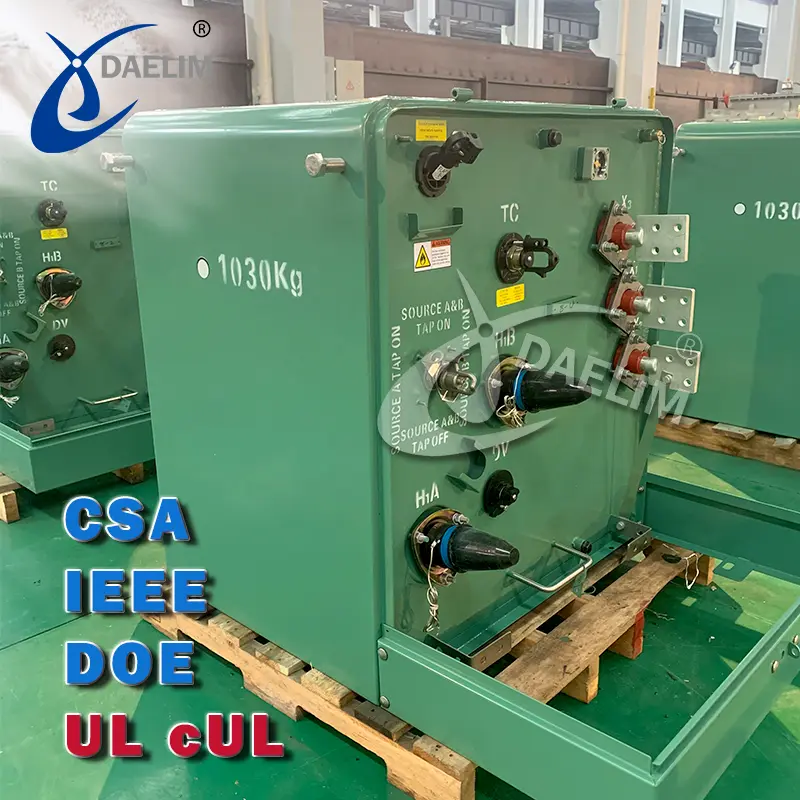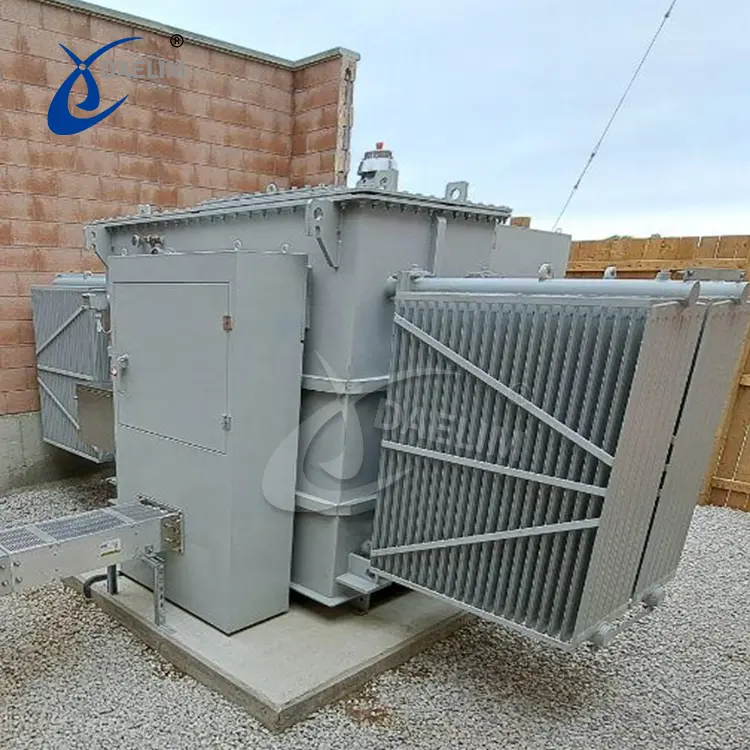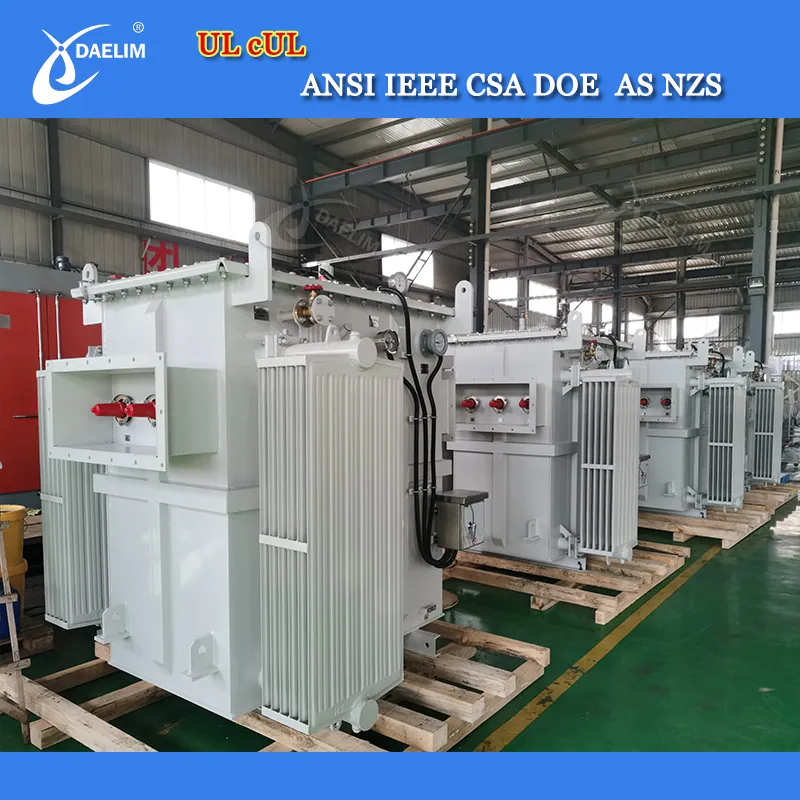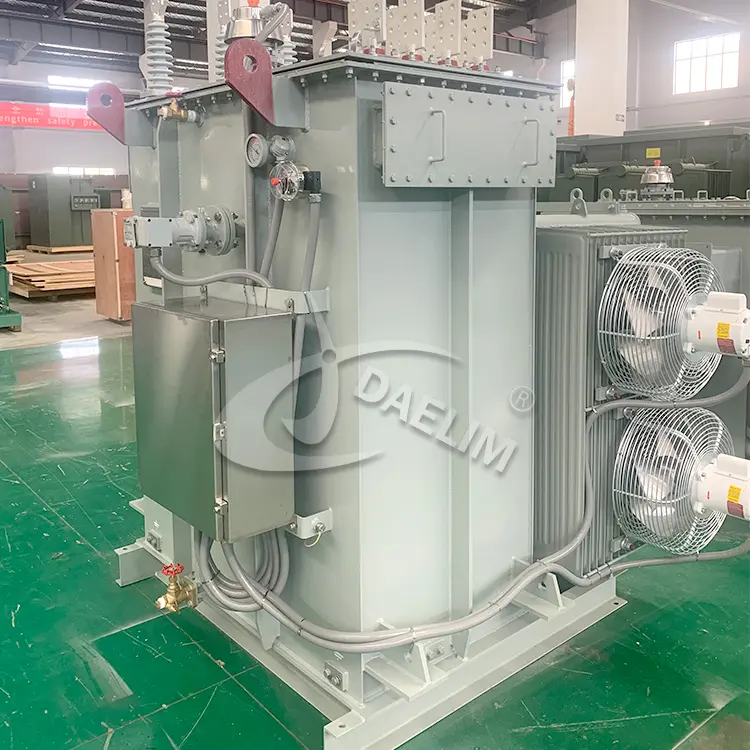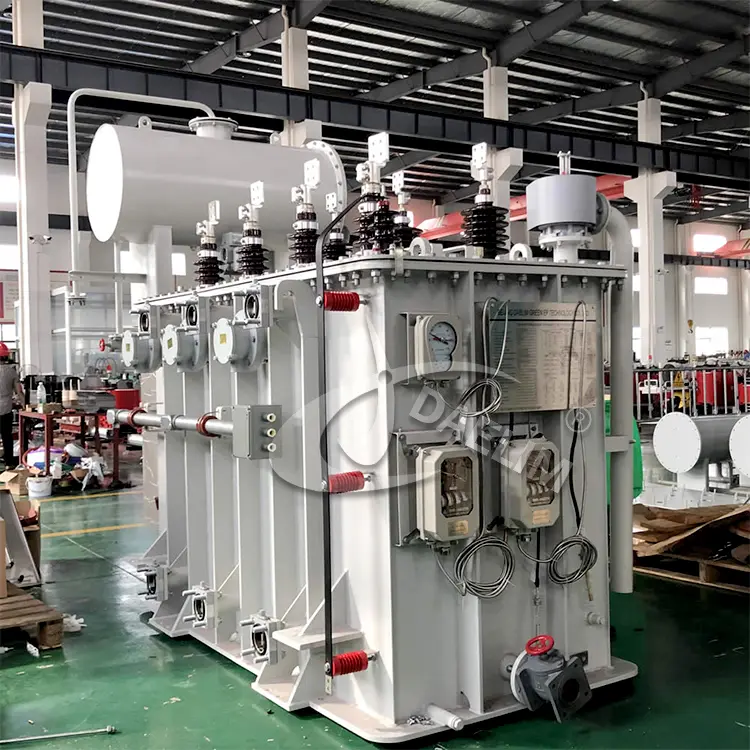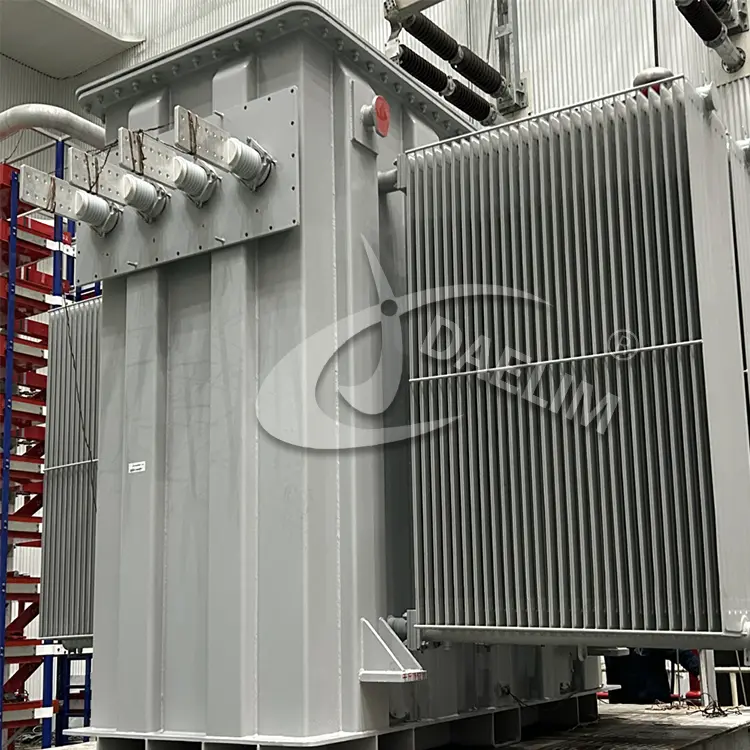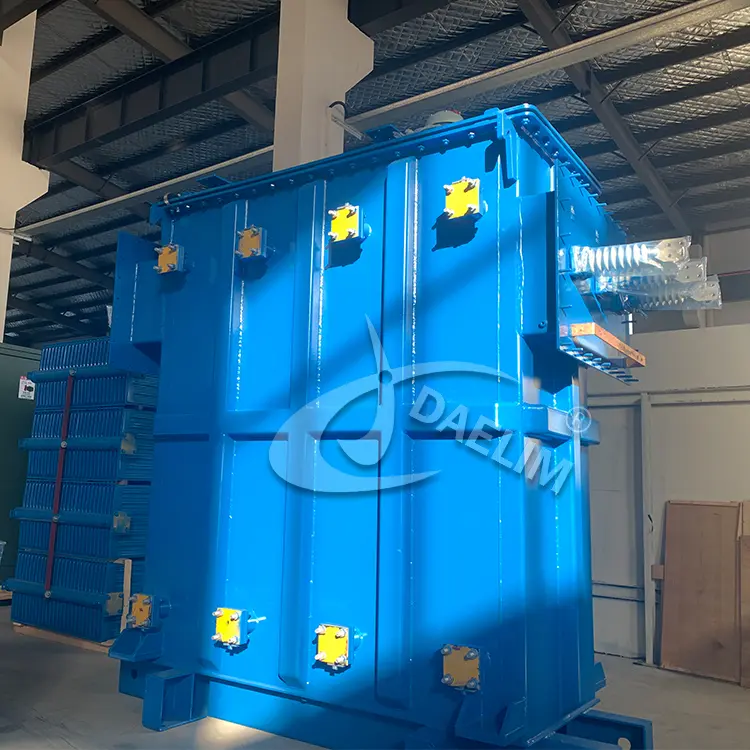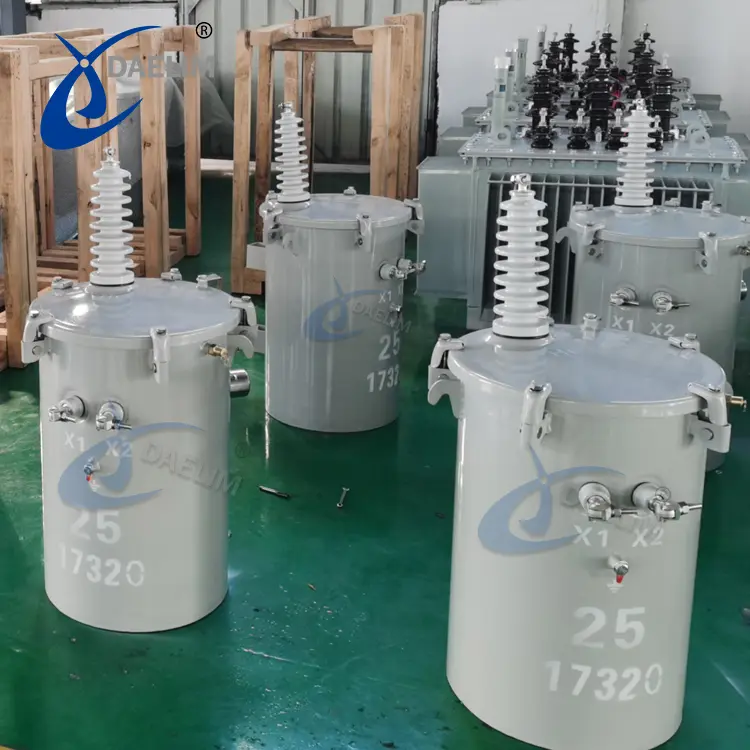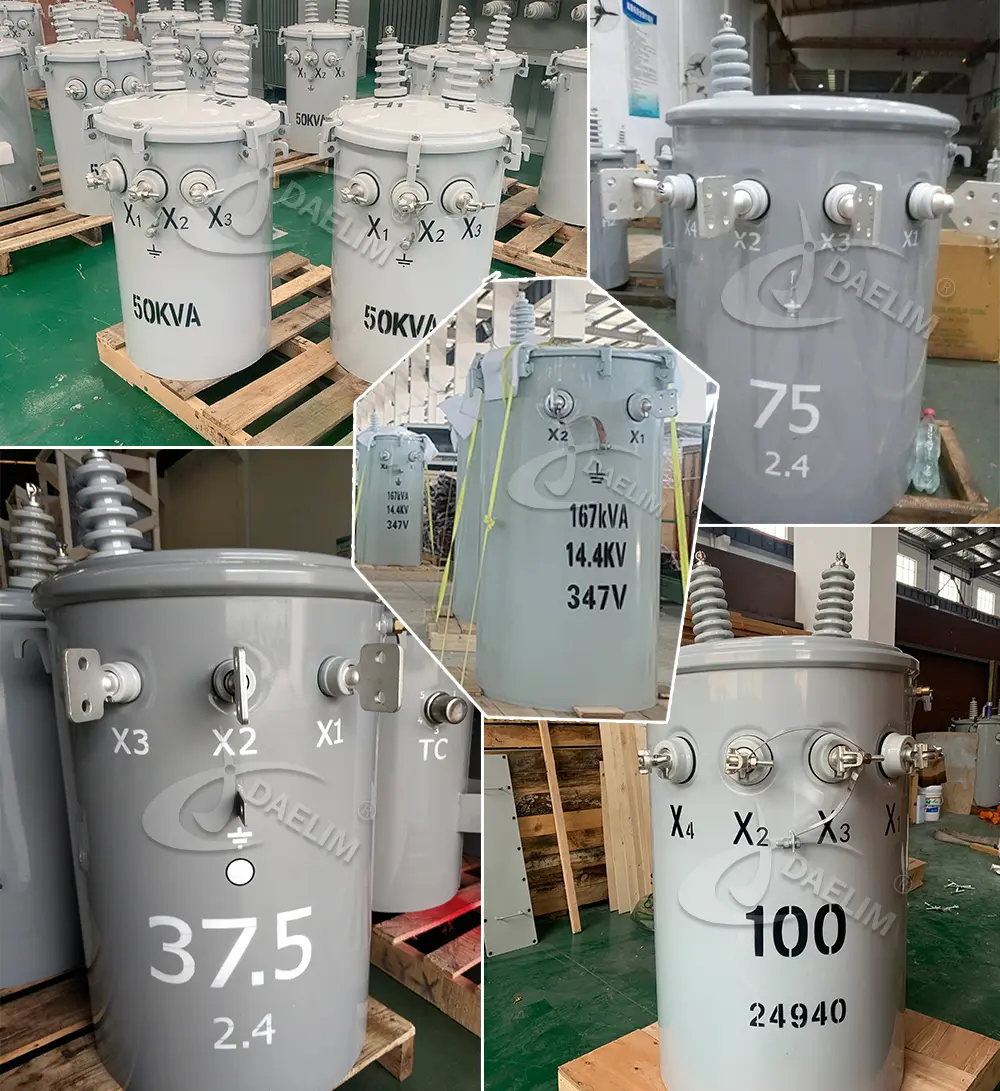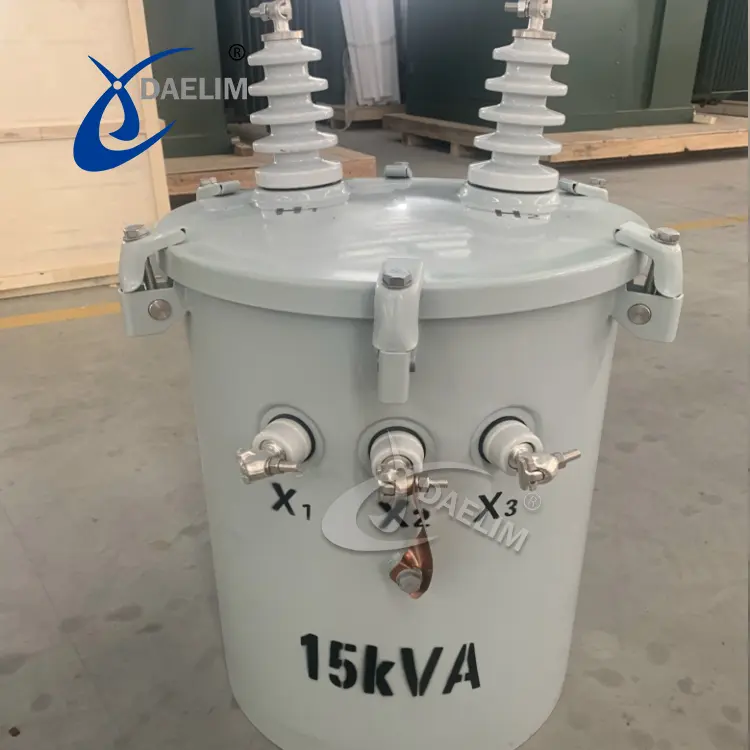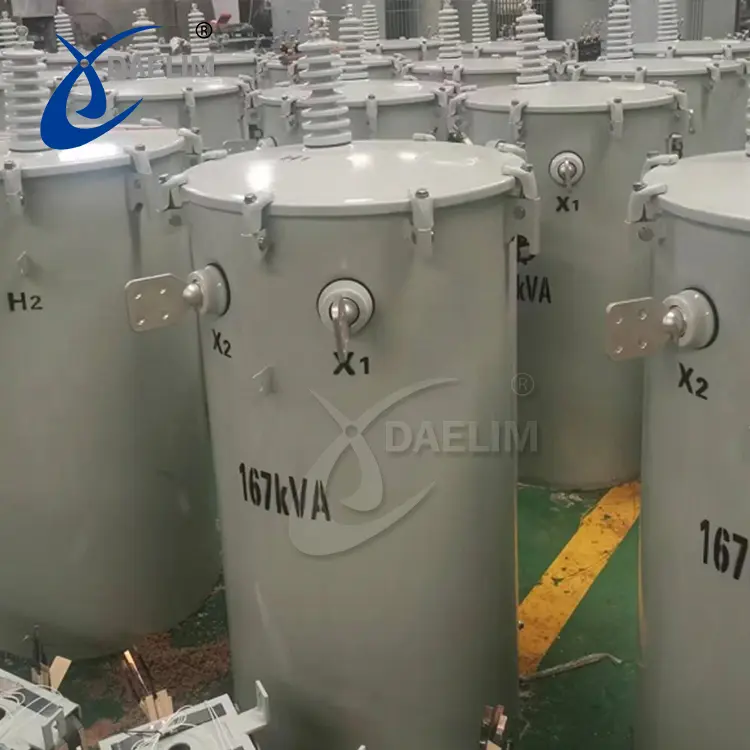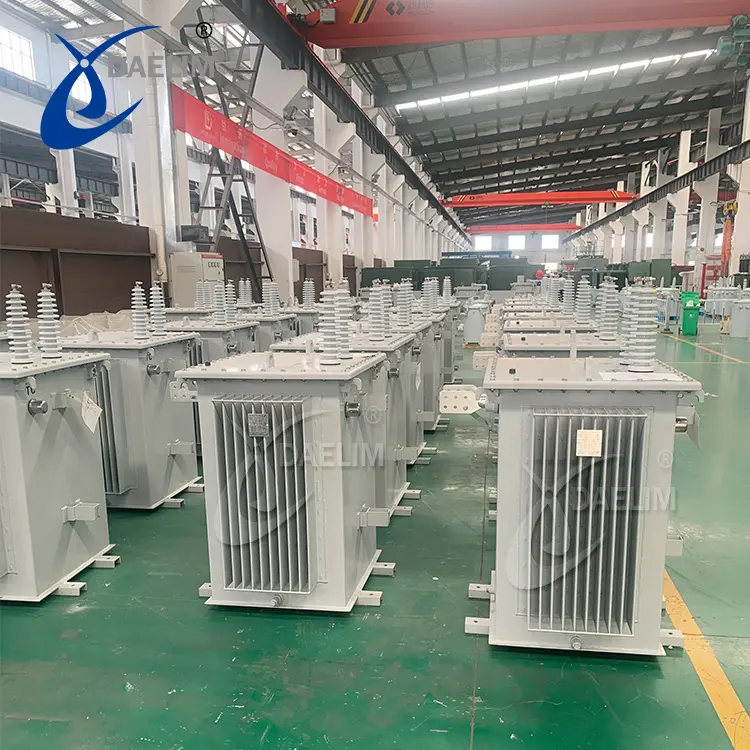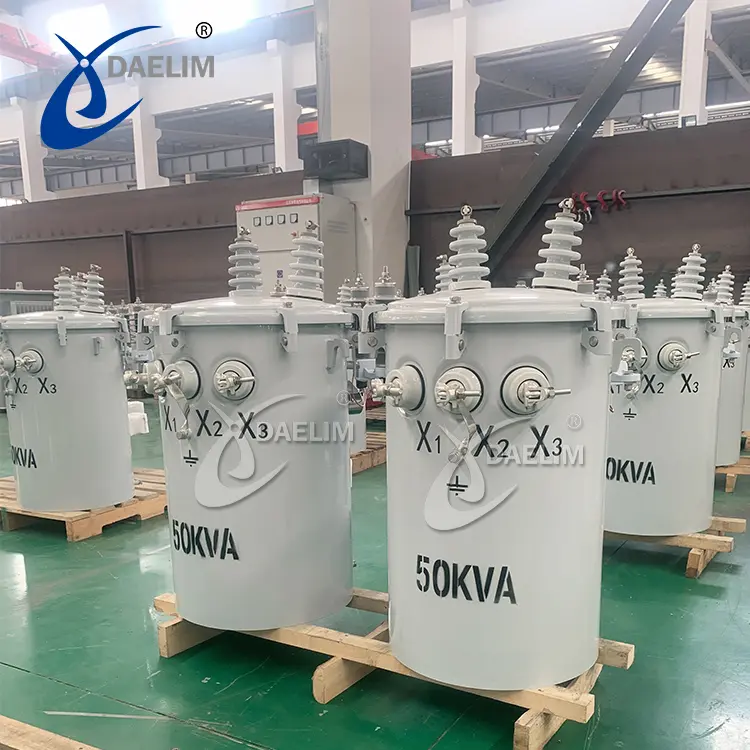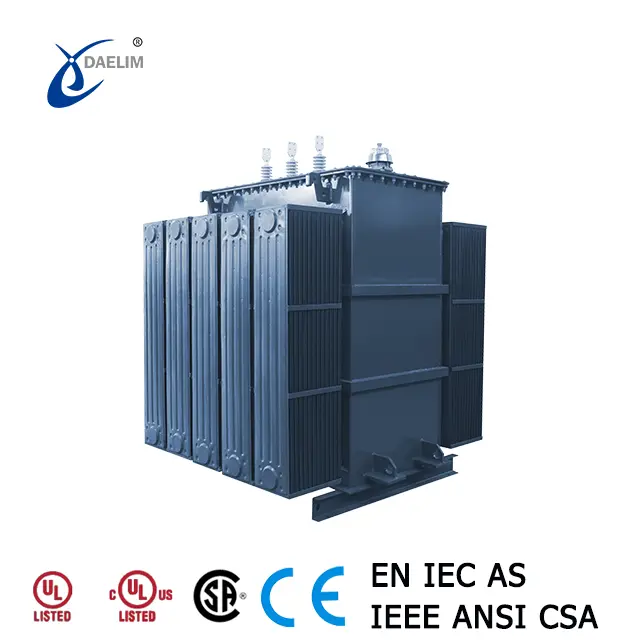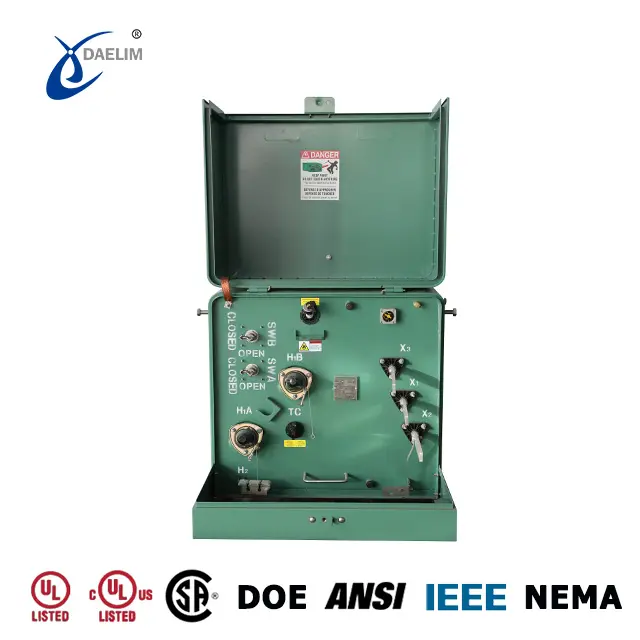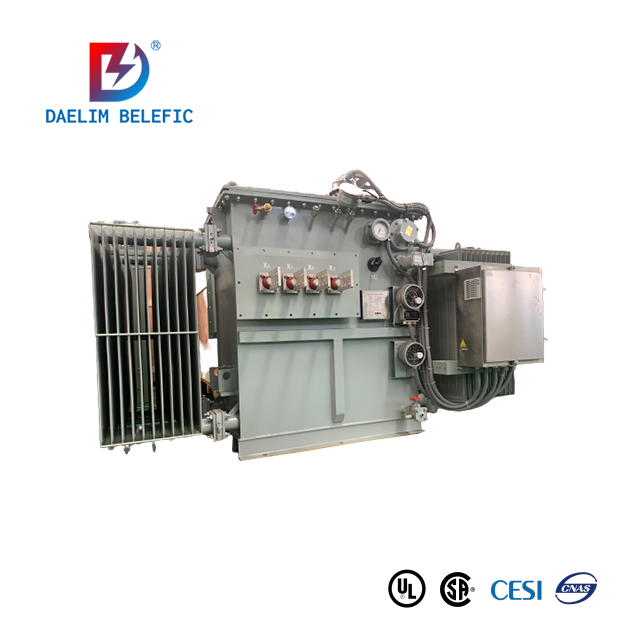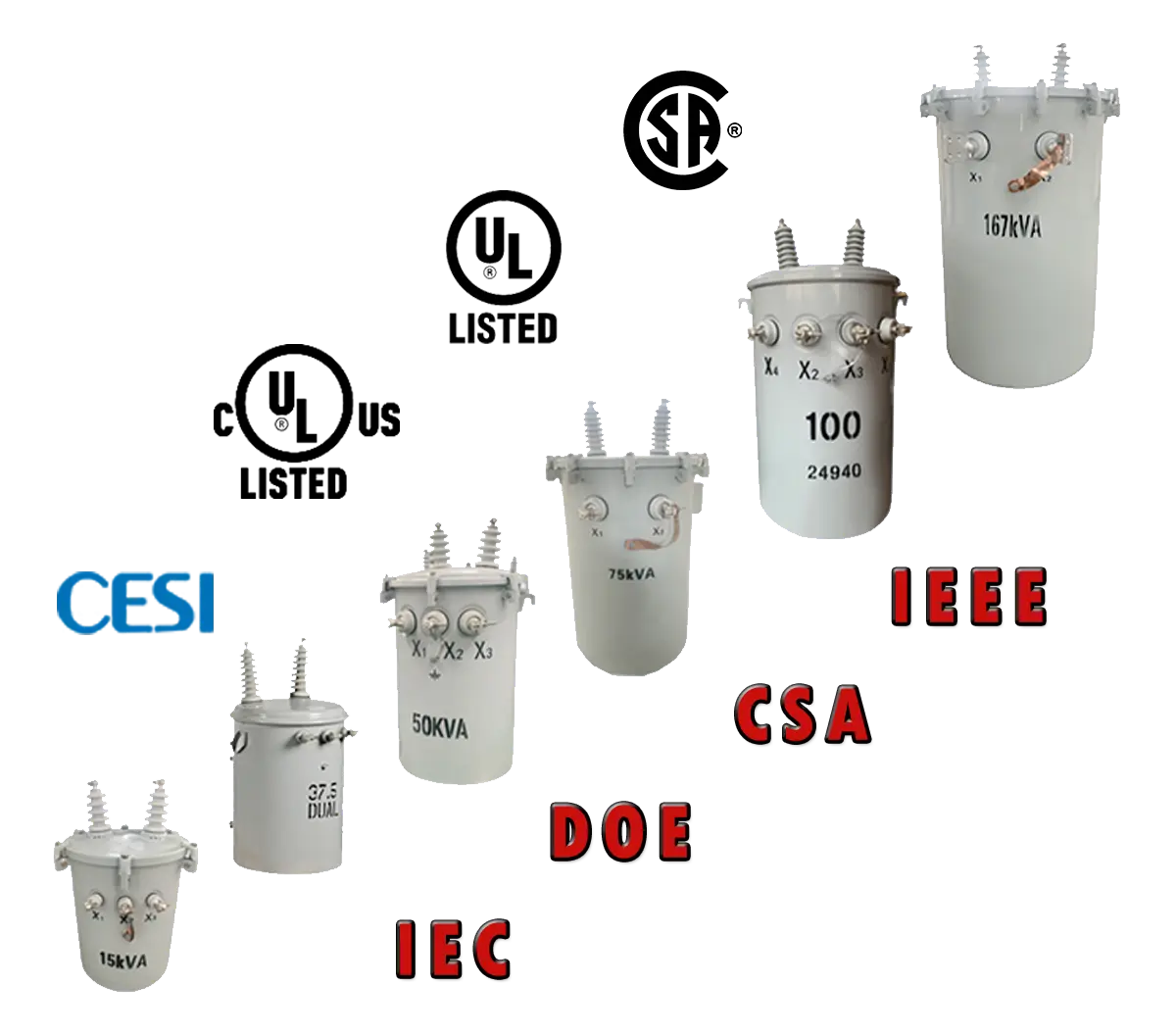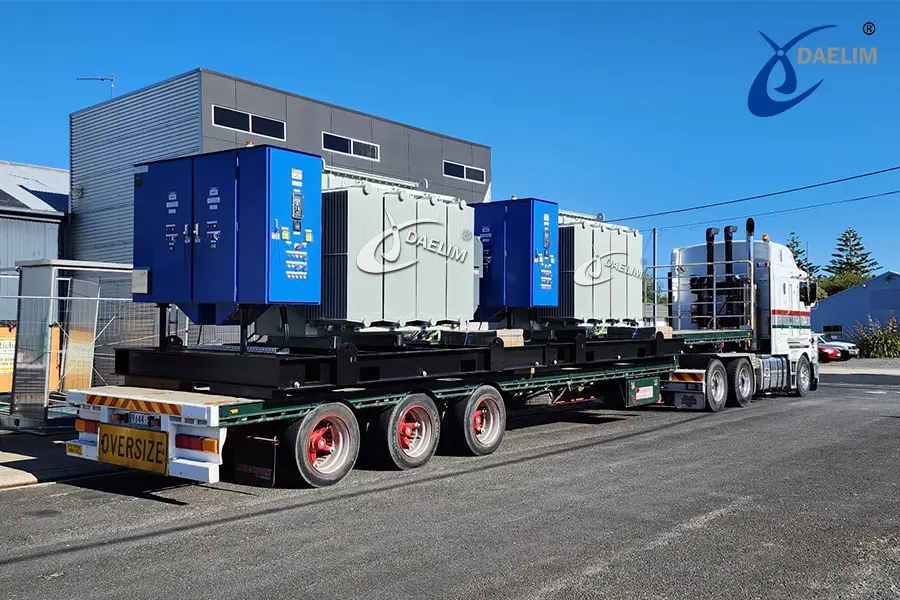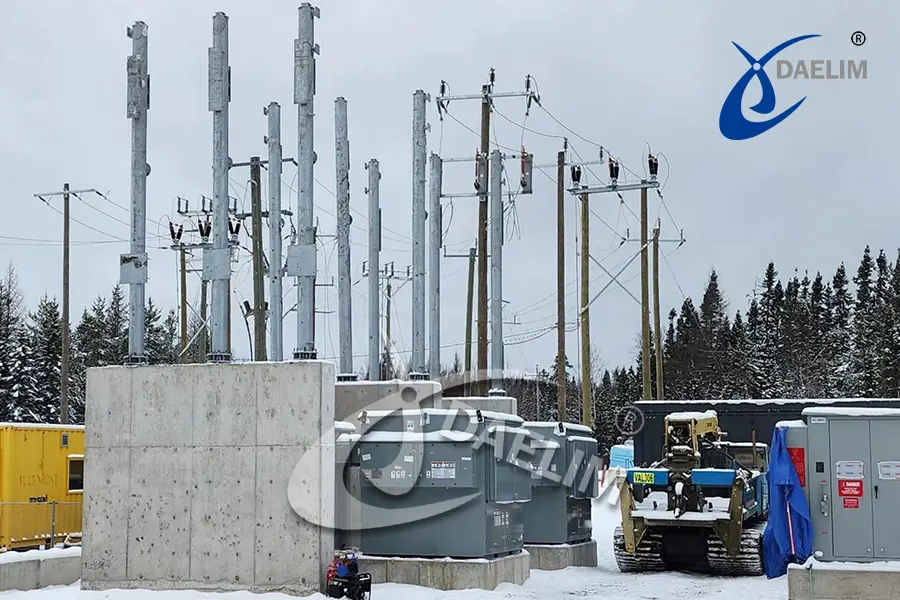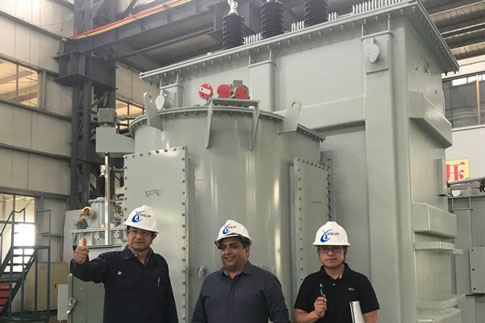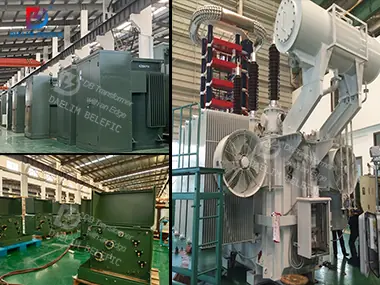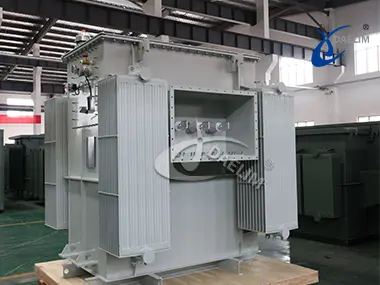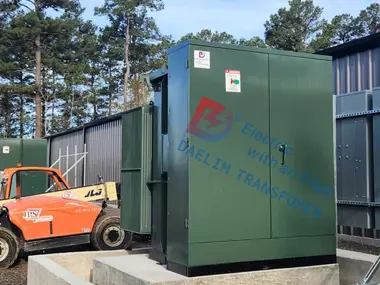The Ultimate Guide To Step Down Transformer
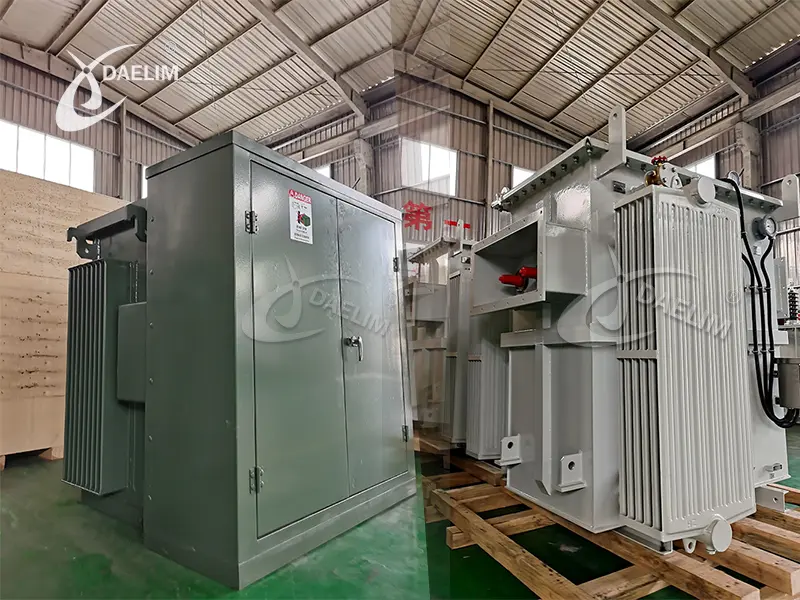
Step down transformers come in different shapes and sizes, each offering a different power output level and voltage reduction. To find the right step-down transformer for your needs, it's essential to get familiar with transformers, in general, and start working your way to the different types and iterations that offer a variety of applications.
A step-down transformer has its features and applications. This guide aims to answer some of the most commonly asked questions about step-down transformers so you can be better informed about this type of transformer and find the best one for your needs.
More DetailWhat is a Step Down Transformer?
A step-down transformer is a type of transformer that reduces the voltage from primary to secondary. This type of transformer is also known as a bucking transformer. In this type of setup, the main winding has more turns than the second one because it provides the input voltage.
That means the current in the secondary winding will be lower than the current in the primary winding when the transformer is under no-load conditions. As a result, a transformer's transformation ratio will equal the square root of its primary to secondary inductance (L) ratio. This configuration ensures that the voltage in the receiving end is lower than the origin.
What Are The Types Of Step-Down Transformers?
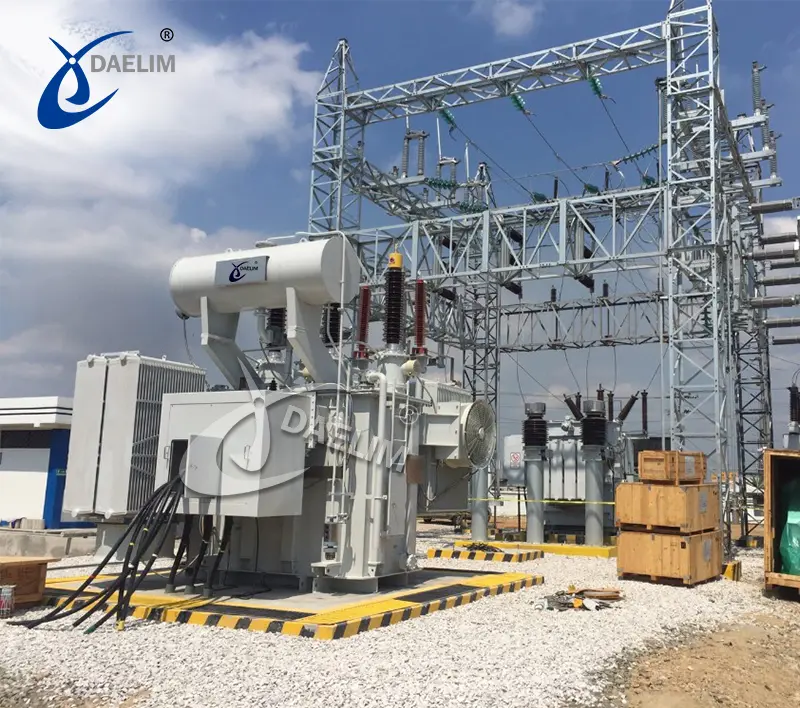
HV Power Transformer
In the expansive realm of power transmission, HV Power Transformers stand as stalwarts, skillfully orchestrating the seamless transfer of electrical energy from power plants to local grids. This intricate process involves a meticulous reduction of voltage levels, ensuring optimal efficiency and compatibility with the grid. The transformation occurs progressively, downgrading from extra-high voltage to high voltage and, ultimately, to the level suitable for local high-voltage substations.
The voltage level of HV Power Transformers is typically below 500kV. Serving a pivotal role in power transmission, the High Voltage (HV) power transformer plays a crucial role in facilitating the efficient and secure transfer of electrical energy across extensive networks.
Contact Daelim TransformerDaelim Transformer's HV Power Transformer is designed to handle voltage levels up to 345 kV, ensuring safe and efficient energy transmission. With advanced insulation and surge protection features, Daelim's HV Power Transformer is a robust solution for extensive power transmission networks.
Key Features:
Voltage Handling: Up to 345kV
Power Rating up to 500MVA
Advanced Insulation Technologies
Surge Protection Mechanisms
Advantages:
Optimized Energy Transmission
Grid Stability and Reliability
Tailored for Extensive Transmission Networks
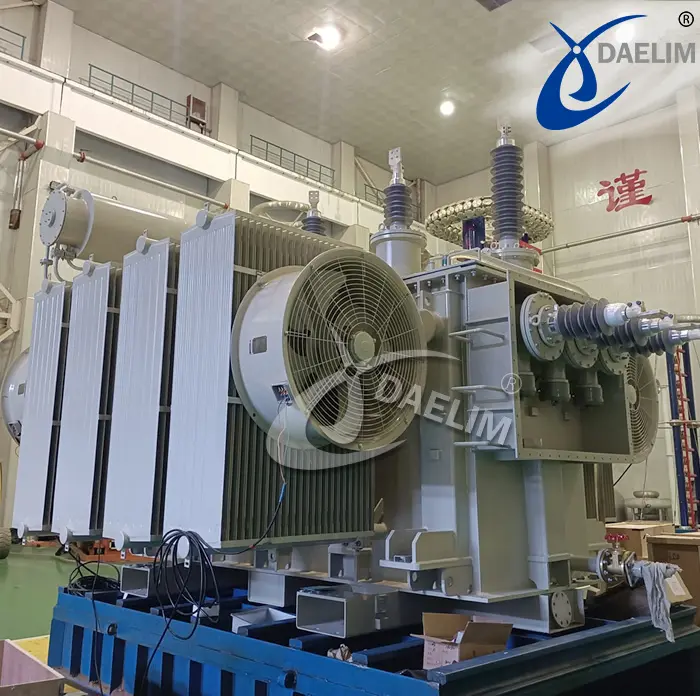
Pad Mounted Transformer
Pad Mounted Transformers provide a versatile and easily accessible solution for localized voltage reduction. Placed on concrete pads, these transformers are commonly used in residential and commercial areas. Daelim Transformer's Pad Mounted Transformers combine functionality with durability, ensuring reliable performance in various settings.
A Pad-Mounted Transformer, classified as a distribution transformer, is expertly manufactured by Daelim Transformer, a professional pad-mounted transformer producer with a comprehensive range of UL-listed. With a voltage level not exceeding 46 kV and a maximum capacity of 10 MVA, Daelim Transformer annually sells thousands of pad mounted transformers in North America. The team boasts extensive project experience in the American market, ensuring the capability to address any challenges you may encounter with pad-mounted transformers.
Get PricePad Mounted Transformer Key Features
- Robust Construction: Daelim's Pad-Mounted Transformers are built with sturdy materials, ensuring durability and long-lasting performance even in challenging environmental conditions.
- Compact Design: These transformers are designed to be space-efficient, making them suitable for installations in areas with limited space or where aesthetics and minimal visual impact are essential.
- High Voltage Rating: With a maximum voltage level of 46 kV, Daelim's Pad-Mounted Transformers are engineered to handle varying voltage requirements in distribution systems.
- Versatile Application: Suitable for a wide range of distribution applications, these transformers find utility in diverse settings, including residential areas, commercial spaces, and industrial facilities.
- Customization Options: Daelim Transformer provides customization options to meet specific project needs, offering flexibility in terms of design, capacity, and features.
- Proven Performance: With a track record of successfully deploying thousands of transformers in North America annually, Daelim Transformer's Pad-Mounted Transformers have demonstrated reliability and performance in real-world applications.
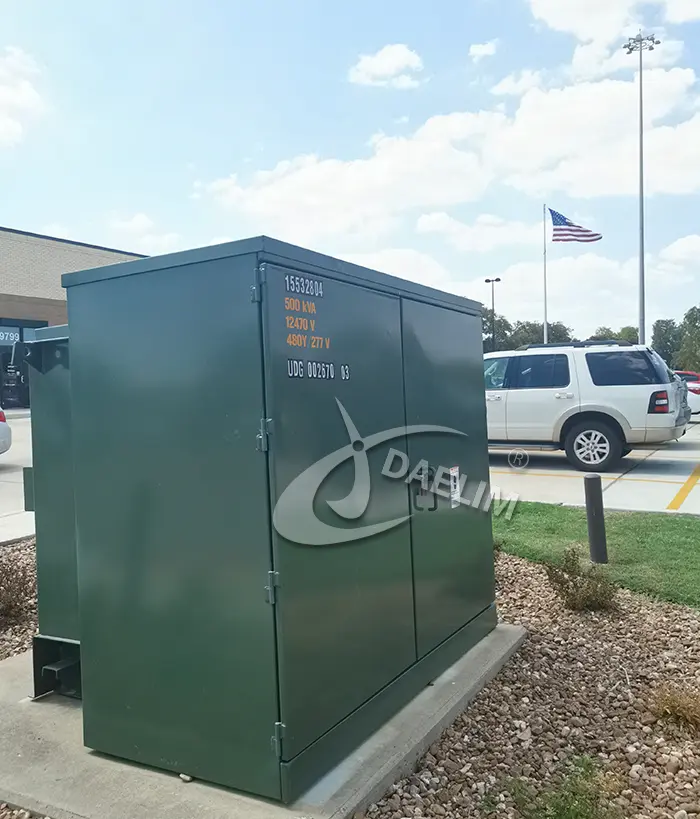
Substation Transformer
Substation Transformers stand as the backbone of power substations, adeptly stepping down high-voltage power to levels suitable for local distribution. Typically, the voltage level does not exceed 69kV, while the capacity can reach an impressive 50MVA.
Daelim Transformer's Substation Transformers are precision-engineered to meet the stringent demands of critical power nodes, ensuring a stable and reliable power supply to a diverse range of consumers. The design standards adhere to ANSI, IEEE, CSA, DOE, IEC, BS, and other international benchmarks.
Contact Daelim TransformerSubstation Transformer Key Features
- High Voltage Step-Down: Efficiently steps down high-voltage power to levels suitable for local distribution, ensuring compatibility with diverse power grids.
- Voltage and Capacity: Typically operates at voltage levels not exceeding 69kV, with impressive capacities reaching up to 50MVA, catering to varying power demands.
- Reliability: Engineered to meet the rigorous demands of critical power nodes, guaranteeing a stable and reliable power supply.
- International Standards: Design standards adhere to global benchmarks such as ANSI, IEEE, CSA, DOE, IEC, and BS, ensuring compliance with international norms.
- Versatility: Suited for diverse applications in power substations, providing flexibility and adaptability to varying environmental and operational conditions.
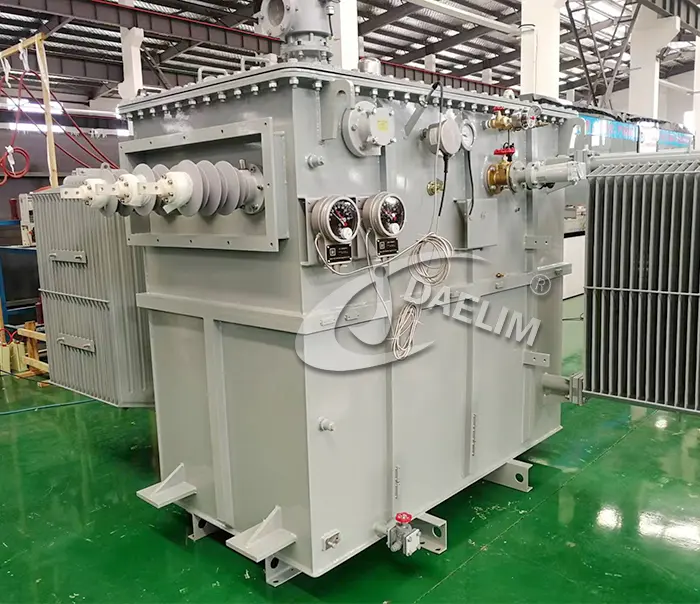
Pole mounted transformer
Pole-mounted transformers, classified as distribution transformers, operate within voltage levels not exceeding 35 kV, with capacities typically below 500 kVA. True to their name, they are installed on utility poles. These transformers prove especially advantageous in regions with space constraints or difficult terrain. Daelim Transformer's Pole-Mounted Transformers feature high voltage capacities up to 35kV and power ratings of up to 333 kVA. They can be further categorized into conventional types and CSP types.
Contact Daelim TransformerAdvantages
- Advanced Technology, Rich Experience: Daelim Transformer provides pole-mounted transformers to many customers, such as utilities, distributors, and electrical wholesalers in the Americas every year.
- Highest Standards of Quality, Reliability, and Durability: Committed to delivering transformers that meet the highest industry standards (ANSI/IEEE, CSA, DOE, IEC, etc.).
- Wide Range to Suit Every Application: Versatile options tailored to diverse applications.
- Units Can Be Customized to Specific Requirements: Flexibility to meet unique needs.
Applications
- Urban and Rural Electrification: Ideal for powering both urban and rural areas.
- Public Utilities: Well-suited for various public utility applications.
- Highly Polluted and Hazardous Conditions: Designed to thrive in challenging and hazardous environments.
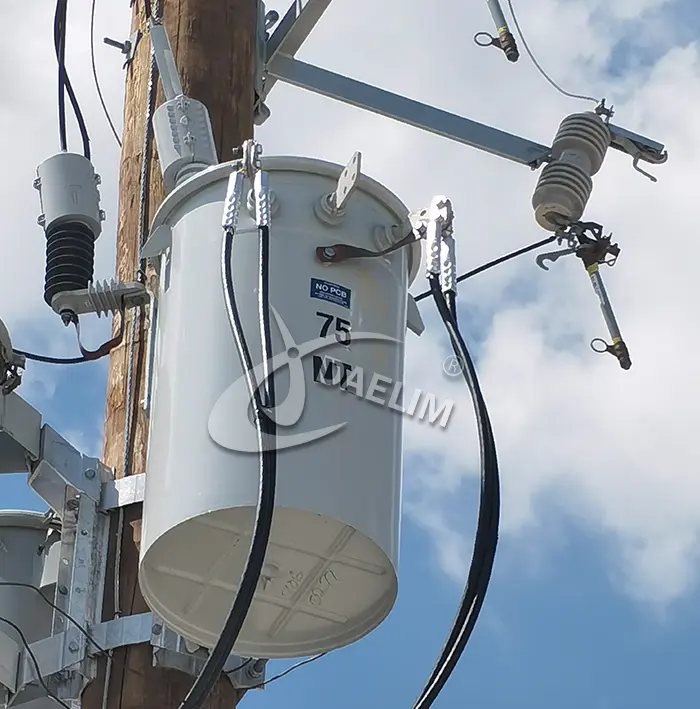
How Does a Step-Down Transformer Work?
You'll get a clue just by the name itself in terms of a step-down transformer function. The functioning of a step-down transformer is based on the principle of electromagnetic induction. When the primary winding is supplied with alternating current (AC), it produces a varying magnetic flux.
This, in turn, induces a voltage in the secondary winding due to transformer action. However, since the number of turns in the primary winding is more than in the secondary winding, the voltage induced in the secondary winding will be less than the voltage applied to the primary winding.
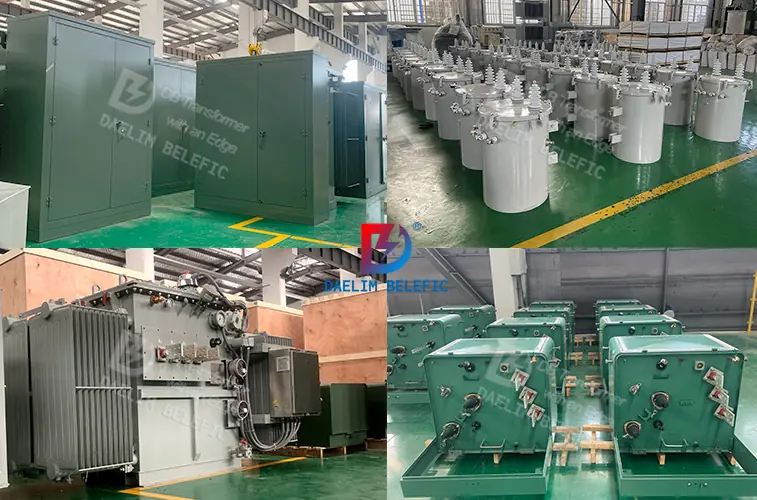 Conversely, a step-down transformer is a type of transformer that reduces the voltage from primary to secondary. This is because the number of turns in the primary winding is more than the number of turns in the secondary winding. This means that the voltage induced in the secondary winding will be less than that applied to the primary winding.
Conversely, a step-down transformer is a type of transformer that reduces the voltage from primary to secondary. This is because the number of turns in the primary winding is more than the number of turns in the secondary winding. This means that the voltage induced in the secondary winding will be less than that applied to the primary winding.
The step-down transformer is used in applications where it's necessary to reduce the voltage. For example, in our homes, the voltage from the power plant needs to be reduced before it can be used for appliances.
While these transformers are different in their work, they tend to work hand-in-hand. So, for example, the electricity sent to our homes goes through both types of transformers.
The power plant uses a step-up transformer to increase the voltage before sending it to the transmission lines. The step-down transformer is then used at the substation to reduce the voltage before it's sent to our homes.
Learn more: Step-up vs Step-down Transformer
What Do Step Down Transformers Do?
In its most basic sense, a step-down transformer synchronizes with the electrical distribution network's frequency. In turn, this takes the much higher voltage from the power plant and "steps it down" to a more manageable voltage that can be used in residential areas.
This process needs to be done because the voltage coming from a power plant is incredibly high (anywhere between 2,000-20,000 volts). If this voltage was sent directly to our homes, it would be incredibly dangerous and could cause serious damage to any electrical appliances.
Learn more: 10000 kVA (10/12.5MVA) Substation Transformer
How Much is a Step Down Transformer?
The price of a step-down: transformer will vary depending on the specifications that you need. There are also different types of step-down transformers, from those used in residential areas to those used in commercial and industrial settings.
To give you a better idea of the price range, a small step-down transformer used in a home can cost around $30. A medium-sized step-down transformer used in a commercial setting can cost around $100. And finally, a large step-down transformer used in an industrial setting can cost several thousand dollars.
So, if you're considering a step-down transformer price, it's important to determine what size and type of step-down transformer you need for your specific application.
How To Test Step Down Transformer?
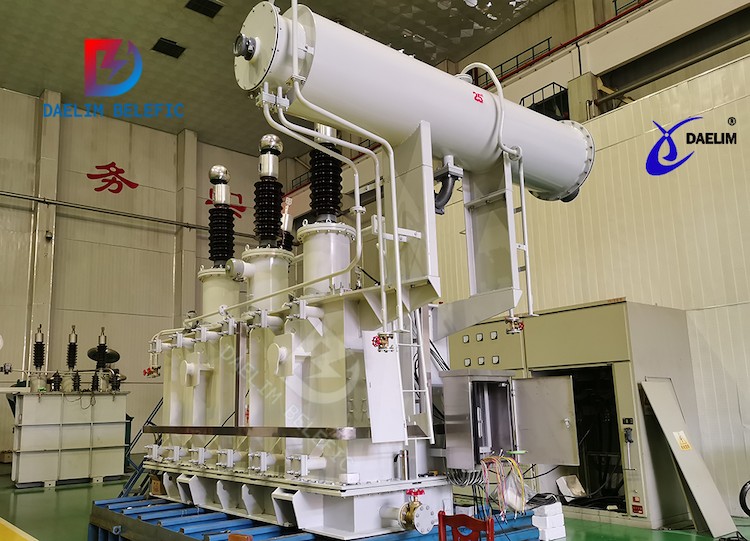 If you want to test a step-down transformer, you can do so using a voltmeter. However, before you can even test and determine the output voltage numbers of your transformer, you'll need first to uncover the output coil's terminals.
If you want to test a step-down transformer, you can do so using a voltmeter. However, before you can even test and determine the output voltage numbers of your transformer, you'll need first to uncover the output coil's terminals.
The step-down transformer must also be connected to a reliable power source. To ensure accurate readings, ensure that the voltmeter is set to AC voltage and in the appropriate range of around 200 VAC (average). You should also make sure that your voltmeter is properly grounded.
Once set, touch the leads to the input and output terminals of the step-down transformer you're testing. You can then take note of the reading on the voltmeter's display. This will give you the transformer's input and output voltage.
The next step is to determine the transformer's turn ratio. To do this, divide the output voltage by the input voltage. This number will give you the transformer's turn ratio.
For example, if the input voltage is 240 VAC and the output voltage is 120 VAC, the transformer's turn ratio would be 0.5.
It's also important to remember that a step-down transformer's secondary voltage can never be higher than the primary voltage. In other words, the output voltage should always be lower than the input voltage.
If you get a reading higher than 1, there's something wrong with the transformer, which needs to be replaced.
Read more: How to test a power transformer?
Step Down Transformer Symbol
A single-phase step-down transformer that converts the higher primary winding voltage into a lower, more manageable secondary winding voltage has this symbol:
This symbol signifies that the primary voltage is "stepped-down" to the secondary voltage. Therefore, the number of turns on the secondary winding becomes lower compared to the number on the primary winding, resulting in a lower secondary voltage.
You may enjoy: Pole Mounted Transformer
How Efficient Are Step-Down Transformers?
Step-down transformers are known for their extreme efficiency in terms of energy conversion. It's not uncommon for a step-down transformer to have an efficiency rating higher than 95%. It can give the desired output with an efficiency of up to 99% if it's well-designed and used under ideal conditions.
That means a step-down transformer can give you the desired voltage output you need without experiencing a loss of power. So not only are step-down transformers affordable, but they're also highly reliable and efficient in terms of power conversion.
Keep reading: Transformer Efficiency: The Ultimate FAQs Guide
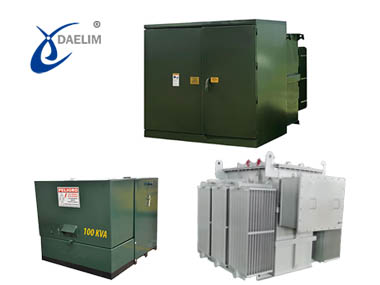 You might be wondering how you can find the amperage values. They are usually included in the nameplate data of your equipment. If not, you can compute it by using the wattage values. Just divide the watts by the secondary voltage to get the amperage.
You might be wondering how you can find the amperage values. They are usually included in the nameplate data of your equipment. If not, you can compute it by using the wattage values. Just divide the watts by the secondary voltage to get the amperage.
Watts (W) / Secondary Voltage (V) = Amperes (A)
For example, if the wattage is 1800 and the secondary voltage is 120V, the amperage would be 15.
Now that you know the primary and secondary voltages and the required amperage, you can start selecting the right step-down transformer with the ideal size.
Remember that the secondary voltage must be lower than the primary voltage, and the amperage must be equal to or greater than the required one. With that in mind, you can choose the best step-down transformer for your needs!
Get it now: Ultimate Guide To Transformer Sizes and Ratings
Step Down Transformer Application
As you can see, step-down transformer application typically includes power distribution and electrical equipment. Step-down transformers are designed to reduce the primary voltage to a lower secondary voltage. This is done so that the electrical equipment can safely use the power without experiencing any damage.
Step-down transformers have a very wide range of applications, including residential, agriculture, industry, commerce, data centers, utilities, EV Charging, renewable energy, energy storage, etc.
Read my article on Power Transformer-The Ultimate FAQs Guide
Step Down Transformer Connection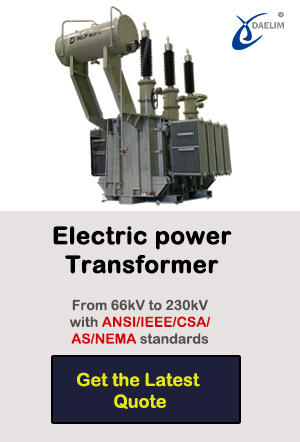
Step-down transformers are typically used in the interconnection of transmission systems with different voltage and power levels. It's used to decrease voltage levels from high to low values. Here are some examples of step-down transformer connections:
66/33 kV
115/69 kV
220/110 kV
Reading more about Transformer Connection
As you can see, the secondary voltage is always lower than the primary voltage. This ensures that the electrical equipment can safely use the power without experiencing any damage.
How To Install A Step-Down Transformer?
Installing a step-down transformer is a fairly straightforward process. However, there are a few things you need to keep in mind before you start.
First, you must ensure that the secondary voltage is lower than the primary voltage.
Second, you must ensure that the ampere is equal to or greater than the required amperage.
Third, you must ensure that the power rating is sufficient for your needs.
Learn more: Step-by-Step Guideline On Installing A Transformer
Once you've taken care of those three things, you can start the installation process.
First, you'll need to connect the primary winding to the power source.
Second, you'll need to connect the secondary winding to the load.
Finally, you'll need to connect the ground wire to a grounding point.
That's all there is to it! Following these simple steps, you can easily install a step-down transformer.
Daelim's Transformer Projects
Daelim Transformer’s business spans North America, Central and South America, Australia, Europe, and other regions. The company has extensive project experience. Below are a few examples of completed transformer projects:
Related Products
Related Article
4500 kVA Substation Transformers for Australian Mining Site
Today, we introduce a project by Daelim Transformer aimed at supplying transformers to a mining site in Australia. This project entails the provision of two units of 4500 kVA substation transformers tailored to fit the narrow confines of mining tunnels. Due to space constraints, the transformers need to be compact in size and mounted on mobile racks for easy maneuverability within the mine shafts. This necessitates meticulous design to meet the strict dimensional requirements set by the client.
4000 kVA Three Phase Power Transformer For Canada
A Canadian customer has shared photos with us, showcasing the installation and operation of two 4000kVA transformers designed and produced by Daelim Transformer. The transformers have received highly positive feedback from the customers, who found them to be efficient and expressed satisfaction with the collaborative experience working with the Daelim Transformer team. We look forward to further expanding our cooperation with Daelim Transformer in the future.
20mVA Furnace Transformer, Mexico
Installation in 2018, is used to supply power to an electric furnace, which lowers the high voltage to the furnace-required lower voltage. It was designed according to client's request.
Step Up Transformer VS Step Down Transformer
Daelim is ANSI/IEEE, UL transformer manufacturer who has been cooperating with many popular brands such as AMAZON, EATON, and SOLOMON brands in the US. Daelim production of step up and step down transformers meet various international standards. Such as: IEEE/ANSI, CSA, AS/NZS, GOST, EN, etc.
Why do PV systems use Double-split step-up transformers?
The double-split transformer offers significant structural advantages. It achieves electrical isolation between two inverters, reducing electromagnetic interference and circulating current between branches. Additionally, it filters the AC output of each inverter separately, resulting in small output current harmonics and improved power quality. In case of a short circuit in one branch, it effectively limits the short-circuit current and maintains voltage at a certain level to ensure uninterrupted user operation.
DOE Efficiency Standards for Transformers
DOE efficiency standards for transformers mandate minimum energy efficiency levels, impacting manufacturers and consumers alike. Implemented to conserve energy, reduce costs, and support sustainability, these standards cover various transformer types and involve periodic updates. Compliance requires adjustments in design and materials, affecting transformer weight and installation practices. Effective from July 2024, these standards aim to enhance overall grid stability and energy conservation efforts.

